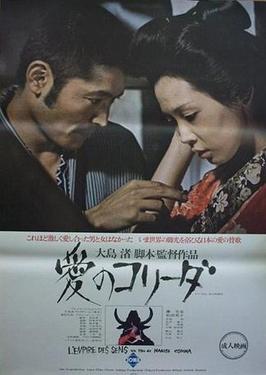Cast: Kei Sato, Saeda Kawaguchi, Akiko Koyama, Rokko Toura, Fumio Watanabe. Screenplay: Tsutomu Tamura, based on a novel by Taijun Takeda. Cinematography: Akira Takada. Production design: Shigemasa Toda. Film editing: Keiichi Uraoda. Music: Hikaru Hayashi.
Violence at Noon is an edgy, jumpy film about a serial rapist and killer of women, played with his characteristic intensity by Kei Sato. It's a notable departure in technique by director Nagisa Oshima, usually given to long takes, in that it's constructed of thousands of individual shots. Akiko Koyama and Saeda Kawaguchi play the two women, both victims of the rapist, who try to piece together the truth about his life.















